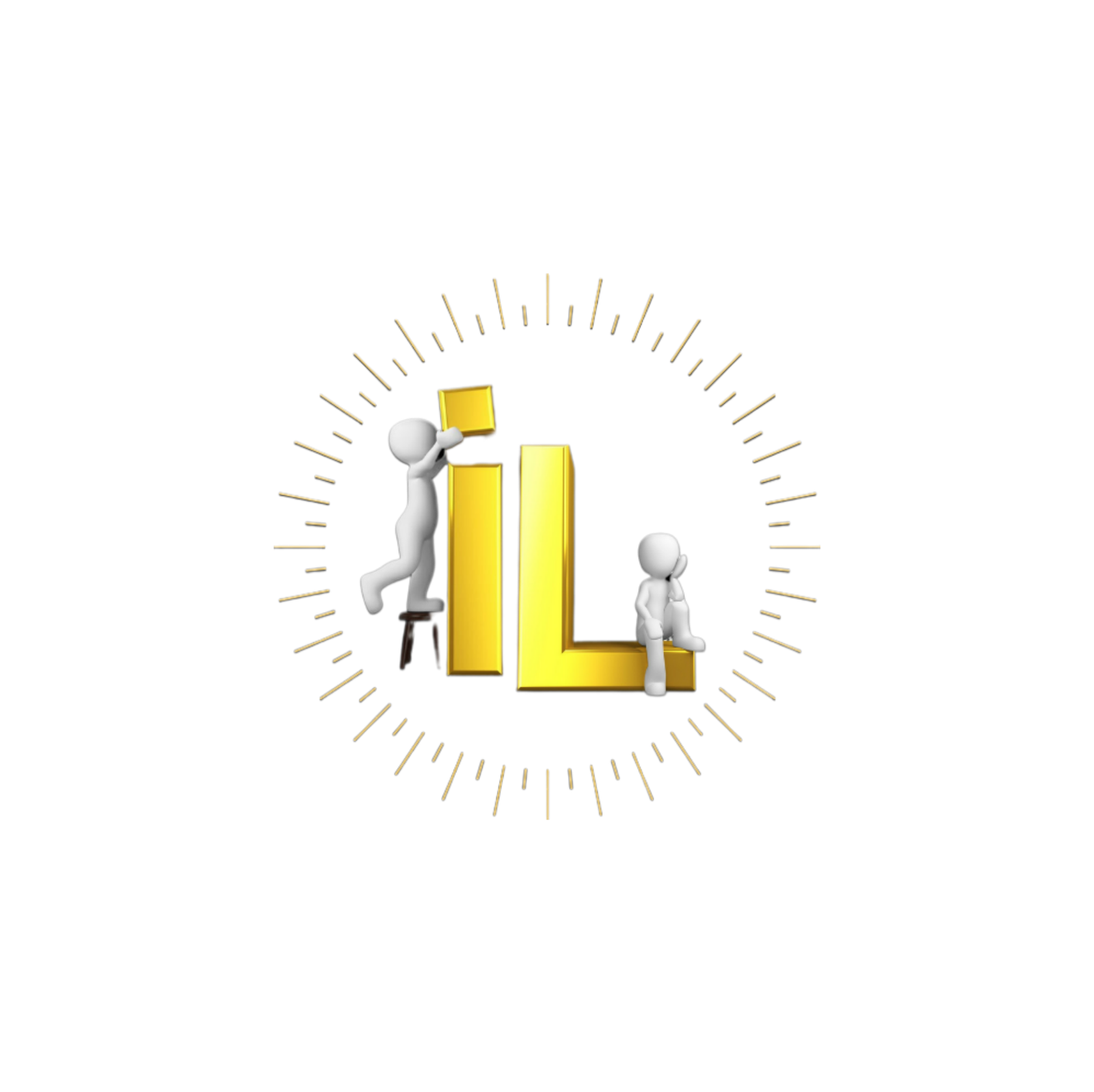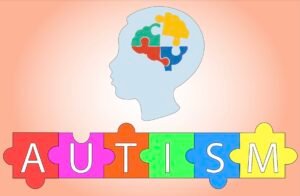Autism: What does it mean to live with autism spectrum disorder? How can we better support individuals with autism? Autism, also known as autism spectrum disorder (ASD), is a complex condition. It affects people differently, impacting how they interact, communicate, and behave.
Every child with autism has a unique experience. They may need personalized support and interventions. With over 1 in 36 children in the U.S. diagnosed with autism, understanding this condition is key. It helps us create a more inclusive and supportive environment.
A vibrant abstract representation of the autism spectrum, featuring a spectrum of colors blending and intertwining, with intricate patterns symbolizing diversity and individuality, set against a soft, calming background that evokes a sense of understanding and acceptance.
We will explore the complexities of autism. We’ll talk about the importance of early diagnosis and the characteristics of autism. We’ll also look at the various interventions available to support individuals with ASD.
From behavioral therapy to speech and language therapy, there are many ways to help children with autism. By raising awareness and promoting acceptance, we can build a more inclusive community. This community will support individuals with autism spectrum disorder.
Key Takeaways
- Autism spectrum disorder is a neurodevelopmental condition that affects individuals differently, impacting social interaction, communication, and behavior.
- Early diagnosis and intervention are crucial for improving outcomes for children with autism.
- Autism spectrum disorder is a condition with varying degrees of severity, and each child’s experience is unique.
- Interventions such as behavioral therapy, speech therapy, and occupational therapy can benefit children with autism.
- Raising awareness about autism and promoting acceptance can help create a more inclusive and supportive environment for individuals with autism spectrum disorder.
- Support networks, including local support groups and online communities, offer practical advice and emotional support for families dealing with autism.
What is Autism Spectrum Disorder (ASD)?
Autism Spectrum Disorder (ASD) is a condition that affects how people interact and communicate. It also impacts learning and behavior. The Centers for Disease Control and Prevention say about one in 36 kids have ASD.
Symptoms of autism often show up in the first two years of life. They can include challenges in social and communication skills, intellectual disabilities, and other health issues.
Getting help early in life can greatly improve a person’s health and happiness. Early diagnosis and intervention are key to managing autism symptoms. The Diagnostic and Statistical Manual of Mental Disorders (DSM-5) now calls all these conditions “Autism Spectrum Disorder.”
The criteria for ASD include problems with communication and social skills. It also includes restricted or repetitive behaviors.
Definition and Classification
The way we define and classify autism has changed over time. There are different types of ASD, including autistic disorder, Asperger’s syndrome, and pervasive developmental disorder. Knowing these definitions is important for creating effective autism treatment plans.
By recognizing autism symptoms and getting help early, people with ASD can get the support they need. This can help them manage their condition and improve their overall well-being.
The Spectrum Explained
The autism spectrum includes a range of conditions that affect communication, social interaction, and behavior. People with autism have different symptoms, such as challenges in social and communication skills, intellectual disabilities, and other health issues.
The spectrum shows varying levels of severity. Each person with ASD has unique needs and requirements.
Recognizing the Signs of Autism
Autism awareness is key for early help and support. Spotting autism signs can be tough, but it’s vital for care. The American Academy of Pediatrics says all kids should be checked for autism at 18 and 24 months. This check can spot signs like speech delays, social struggles, and repetitive actions.
Common autism signs include avoiding eye contact and not responding to their name. Kids with autism might also not share interests or show repetitive behaviors like lining up toys. Tools like the Milestone Tracker App and the M-CHAT-R online screening can help track a child’s growth and if they need a professional check.
Early, intense behavioral therapy can greatly help young kids with autism. It’s important to know autism’s severity levels, from level 1 (needs support) to level 3 (needs a lot of support). By knowing the signs and offering autism resources, we can make a more supportive world for those with autism.
Important signs of autism include:
- Delays in speech and language development
- Difficulty with social interactions
- Repetitive behaviors
- Avoiding eye contact
- Not responding to their name
By spotting these signs and offering autism resources, we can help those with autism get the support they need to succeed.
Early Signs and Symptoms of Autism
Spotting early signs of autism is key for autism diagnosis and help. Studies in autism research point to social issues and repetitive actions as major signs.
Children with autism might struggle with gestures like pointing. They might also repeat words or have trouble with nonverbal communication.
Social Communication Indicators
- Difficulty with eye contact
- Delays in language development
- Difficulty understanding simple instructions
Behavioral Patterns
Repetitive actions, like hand flapping, are common in autism. They might also have strong interests and get upset by changes.
Early detection and help can greatly improve a child’s life. This shows why autism research and autism diagnosis awareness are so important.
Autism Diagnosis Process
The autism diagnosis process is thorough. It involves a team of experts like psychologists, psychiatrists, and speech therapists. To be diagnosed with autism spectrum disorder (ASD), a child must show problems with social skills and repetitive behaviors. The Diagnostic and Statistical Manual of Mental Disorders, 5th Edition (DSM-5) sets the rules for diagnosing ASD.
Experts like neurodevelopmental pediatricians and child neurologists help with the diagnosis. They use tools like parents’ reports and direct observations of the child’s behavior. Knowing autism causes and getting autism support can help a lot during this time.
Some signs of ASD include:
- Stereotyped or repetitive motor movements
- Insistence on sameness
- Highly restricted interests
- Hyper- or hyporeactivity to sensory input
Getting a diagnosis of autism can help a lot. It opens the door to services that meet a child’s special needs. Understanding the diagnosis process and having support can make a big difference. It helps families care for their children with ASD better.
| Severity Level | Description |
|---|---|
| Level 1 | Requires support |
| Level 2 | Requires substantial support |
| Level 3 | Requires very substantial support |
Understanding Autism Causes and Risk Factors
Autism, also known as Autism Spectrum Disorder (ASD), is a complex condition. It has many causes and risk factors. Research shows it’s a mix of genetic and environmental factors.
Genetic factors, like mutations in brain development genes, may cause autism. Environmental factors, like air pollution before birth, also play a role.
Studies show that autism therapy can help reduce symptoms and improve life for those with autism. It’s important to recognize autism signs early for better treatment. Factors like genetic conditions, birth complications, and older parents can increase the risk of ASD.
Research finds that autism often runs in families. This means a higher chance of another child having autism if a sibling does. Environmental risks include air pollution, pesticides, and maternal health issues.
Understanding these causes helps in developing autism therapy and support for families.
Genetic Factors
Genetic testing is recommended for those with ASD. It helps find genetic causes and mutations linked to conditions like epilepsy. Studies show 60 to 90% of autism risk comes from genetics.
Environmental Influences
Exposure to pesticides, air pollution, and certain maternal conditions increases autism risk. Prenatal vitamins may lower this risk. Living close to freeways and air pollution’s impact on genes also play a role.
Current Research Findings
A new test might diagnose autism as early as 1 month old. This is much earlier than the current average of 4 years old. Early-life air pollution exposure and maternal health issues are linked to autism risk.
Treatment Options and Interventions
There are many ways to treat autism. Spotting the signs of autism early is key to finding the right treatment. With the right autism resources, people with autism can live happy lives.
Effective treatments include ABA therapy, speech therapy, and occupational therapy. These help improve social, communication, and behavior skills. For instance, ABA therapy encourages good behaviors and stops bad ones.
Other treatments include:
- Discrete trial training (DTT) and pivotal response training (PRT) under ABA
- Speech and language therapy to improve understanding and use of speech and language
- Occupational therapy to teach skills for independent living
- Cognitive-behavior therapy (CBT) to help individuals cope with anxiety and depression
A serene and colorful library filled with books on autism, featuring various resources like pamphlets, charts, and therapy toys. Cozy reading nooks with soft lighting and inviting cushions, alongside visuals of supportive community activities and diverse individuals engaging in different therapeutic practices. An overall atmosphere of understanding and inclusion, surrounded by plants and art promoting awareness.
It’s important to remember that everyone with autism is different. What works for one might not work for another. So, it’s vital to work with a healthcare professional to find the best treatment. With the right help and support, people with autism can do great things and reach their goals.
| Treatment Option | Description |
|---|---|
| ABA Therapy | Focuses on encouraging desired behaviors and discouraging undesired behaviors |
| Speech Therapy | Helps improve understanding and use of speech and language |
| Occupational Therapy | Teaches skills for independent living |
Living with Autism: Support Strategies
People with autism need many support strategies to live well. Early intervention for autism helps them learn important skills and become independent. Family support, school help, and learning social skills are key parts of a good support plan.
Some important ways to support those with autism include:
- Improving communication skills
- Using visual schedules and checklists
- Teaching them to take care of themselves and do household tasks
- Practicing safety and job skills in the community
These methods can be part of autism treatments and plans. They should fit the person’s special needs and goals. With the right support and adjustments, people with autism can have happy and independent lives.
It’s important to remember that each person with autism is different. They have their own strengths, challenges, and needs. By working together with families, teachers, and doctors, we can give the best support. This helps people with autism reach their highest potential.
| Support Strategy | Description |
|---|---|
| Family Support Systems | Respite care, counseling, and other forms of support for families |
| Educational Accommodations | Individualized education plans, visual schedules, and other accommodations to support learning |
| Social Skills Development | Teaching social skills, such as communication, empathy, and relationships |
Latest Advances in Autism Research
Autism research has seen big strides lately. There’s a strong push to raise awareness and understand autism better. The National Institutes of Health (NIH) has given $100 million to nine Autism Centers of Excellence. This shows a big commitment to moving autism research forward.
Genetic testing and brain imaging are key in this research. For instance, a study used functional connectivity magnetic resonance imaging (fcMRI) to spot autism in high-risk babies by age 2. Also, a mobile app can tell if a toddler has autism by watching their eye movements during videos.
Projects like the Autism BrainNet and the NIH-supported NeuroBioBank are collecting brain donations. They aim to deepen our understanding of autism and find better treatments. As autism awareness grows, supporting ongoing research is crucial. It helps us find new ways to help those with autism.
A vibrant laboratory scene showcasing advanced autism research, featuring scientists analyzing brain scans and data on screens, colorful molecular models symbolizing genetic studies, a diverse range of brain imaging techniques displayed, with diagrams illustrating neural pathways, surrounded by cutting-edge equipment like MRI machines and lab glassware, all set in a bright, modern research facility.
- The average prevalence of Autism Spectrum Disorder (ASD) among children globally is approximately 1%.
- ASD is significantly more prevalent in males than females, with a ratio of approximately 4:1.
- Research suggests that ASD is highly heritable, with multiple genetic variants associated with disease risk, and environmental factors also playing a role.
| Initiative | Description |
|---|---|
| National Institutes of Health (NIH) | Awarded $100 million to support nine Autism Centers of Excellence |
| Autism BrainNet | Collecting and distributing brain donations for crucial autism research |
| NIH-supported NeuroBioBank | Supporting research on autism by providing access to brain tissue and data |
Conclusion: Embracing Neurodiversity and Moving Forward
As we wrap up our exploration of autism spectrum disorder (ASD), it’s vital to see the value in neurodiversity. Autism is not a weakness, but a special way of seeing the world. It brings unique strengths and abilities. By supporting autism and using autism resources, we can make our society more welcoming and inclusive.
People with autism have amazing talents, like better pattern recognition and honest communication. It’s important to value these strengths and not try to fit them into neurotypical norms. By doing so, we can help neurodivergent individuals reach their full potential.
The Trudeau Center has seen a big improvement in confidence and well-being by focusing on individual strengths. Their Employment Concepts program helps find jobs that match autism individuals’ skills. This empowers them to share their unique perspectives and abilities.
As we move ahead, it’s our responsibility to make a world that values neurodiversity. Parents, educators, employers, and the community must work together. By understanding different communication styles and providing the right support, we can tap into the creativity and empathy of the autism community. Together, we can celebrate the diversity of human experience and build a more caring society for everyone.
FAQ
What is autism spectrum disorder (ASD)?
Autism spectrum disorder (ASD) is a complex condition. It affects how a person develops, especially in social interaction, communication, and behavior.
What are the different types of autism spectrum disorder?
There are several types of autism spectrum disorder. These include autistic disorder, Asperger’s syndrome, and pervasive developmental disorder.
What are the early signs and symptoms of autism?
Early signs of autism include speech delays and trouble with social interactions. Children with autism may also have repetitive behaviors. They might have sensory issues and varying abilities in thinking and speaking.
How is autism diagnosed?
Diagnosing autism involves a detailed evaluation. A team of experts, like psychologists and speech therapists, work together to make the diagnosis.
What are the causes and risk factors of autism?
Autism’s causes are still being studied. It’s believed to involve genetics and environmental factors. Genetic changes and prenatal exposure to certain substances might contribute to it.
What are the treatment options and interventions for autism?
Treatments for autism include ABA therapy, speech therapy, and occupational therapy. Early help and support can greatly improve a child’s life with autism.
How can families support a child with autism?
Families can get help through respite care and counseling. Educational support and teaching social skills are also key. These help children with autism in their daily lives.
What are the latest advances in autism research?
Research on autism is ongoing. It uses genetic testing and brain imaging to understand autism better. Scientists are working hard to improve support for those with autism.
Source Links
- https://www.autismfutures.org/article/understanding-autism
- https://www.helpguide.org/mental-health/autism/autism-spectrum-disorders
- https://medium.com/@hina.naveed011/understanding-autism-a-comprehensive-guide-for-parents-and-educators-184587ea9da6
- https://www.nimh.nih.gov/health/topics/autism-spectrum-disorders-asd
- https://www.psychiatry.org/patients-families/autism/what-is-autism-spectrum-disorder
- https://www.mayoclinic.org/diseases-conditions/autism-spectrum-disorder/symptoms-causes/syc-20352928
- https://www.autismspeaks.org/signs-autism
- https://www.cdc.gov/autism/signs-symptoms/index.html
- https://www.autismspeaks.org/autism-symptoms
- https://www.healthychildren.org/English/health-issues/conditions/Autism/Pages/Early-Signs-of-Autism-Spectrum-Disorders.aspx
- https://raisingchildren.net.au/autism/learning-about-autism/assessment-diagnosis/early-signs-of-asd
- https://neurosciences.ucsd.edu/centers-programs/autism/early/signs.html
- https://www.cdc.gov/autism/hcp/diagnosis/index.html
- https://autismsociety.org/screening-diagnosis/
- https://www.cdc.gov/autism/about/index.html
- https://www.autismspeaks.org/what-causes-autism
- https://www.niehs.nih.gov/health/topics/conditions/autism
- https://www.cdc.gov/autism/treatment/index.html
- https://www.nichd.nih.gov/health/topics/autism/conditioninfo/treatments
- https://www.autismspeaks.org/life-skills-for-autism
- https://www.autism.org.uk/advice-and-guidance/topics/strategies-and-interventions
- https://www.nimh.nih.gov/news/science-news/science-news-about-autism-spectrum-disorder-asd
- https://www.sciencedaily.com/news/mind_brain/autism/
- https://pmc.ncbi.nlm.nih.gov/articles/PMC11163702/
- https://resilientmindcounseling.com/exploring-the-strengths-of-autism-embracing-neurodiversity/
- https://trudeaucenter.org/embracing-neurodiversity-in-the-new-year-understanding-and-celebrating-differences-in-autism/





